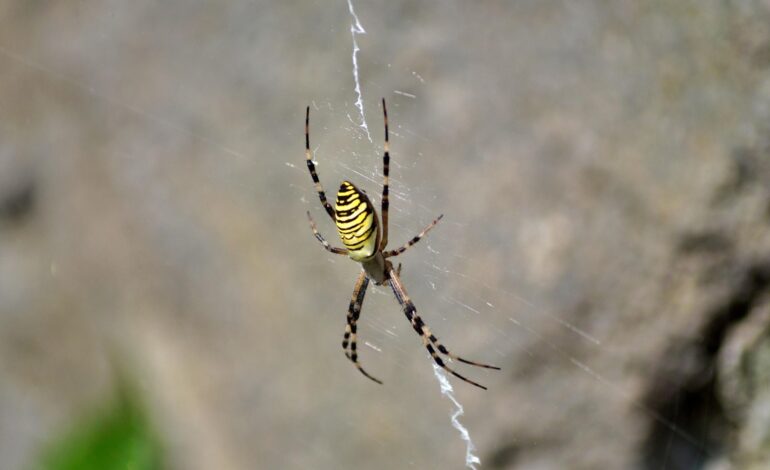Italian Researchers Uncover Spiders’ Secret Alarm System in Webs

A recent study has revealed that spiders use a unique alarm system integrated within their webs to enhance prey detection. Researchers from Italy have investigated this phenomenon, focusing on the stabilimentum—an intricate zigzag pattern woven by the spider species Argiope bruennichi. Their findings, published in PLOS One, showcase how these structures play a crucial role in alerting spiders to potential prey.
The study took place in the forests of Sardinia over a three-year period from 2018 to 2020. The researchers examined stabilimenta from three distinct populations of Argiope bruennichi, known for their striking zigzag patterns along radial threads. This investigation aimed to understand the stabilimentum’s functional significance, which has long perplexed arachnologists.
For decades, scientists have speculated about the purpose of the stabilimentum. While some theories suggested it serves to stabilize webs or protect spiders from UV rays, the new research shifts the focus to its role in transmitting vibrations. By combining extensive field observations with computer simulations, the researchers elucidated how the stabilimenta enhance the web’s ability to detect signals from struggling prey.
The study’s authors emphasized that the zigzag patterns are not merely decorative. Instead, they significantly influence the propagation of vibrations through the web. When prey strikes the web, the vibrations travel differently depending on the stabilimentum’s presence. If prey is caught and thrashing, the stabilimenta effectively transmit an alarm across a wider area of the web, alerting spiders even if they are situated far away.
“Through our research, we found that the decorative stabilimentum in Argiope bruennichi webs is more than just an ornament; it subtly changes how certain vibrations travel,” the study’s authors stated in a press release. This finding underscores the complexity of spider webs and the remarkable adaptations these creatures have developed for hunting.
Additionally, the insights gained from this research could inspire innovative designs for new bio-inspired materials with tunable elastic properties. The study highlights how biological structures can inform advancements in material science, potentially leading to applications in various fields.
These discoveries not only deepen our understanding of spider behavior but also illustrate the intricate relationships between form and function in nature. As spiders continue to captivate scientists, the implications of their unique adaptations may extend beyond the natural world, influencing technology and design in the future.






